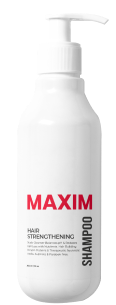During the early 1950s, the Upjohn Company developed minoxidil to treat ulcers. After researchers performed several tests, they discovered that minoxidil was not effectively treating or curing ulcers. Instead, clinical trials revealed that minoxidil is a vasodilator. It opens blood vessels and permits blood to flow more freely.
During the late 1970s, the FDA authorized the distribution of this compound as Loniten in the form of oral pills. Since then, Loniten has become the preferred treatment for patients suffering from high blood pressure.
Researchers discovered that Loniten exhibited a peculiar side effect, additional hair growth, through various tests and research. However, this hair growth occurred in strange places: on individuals' cheeks, the backs of the hands, and the forehead.
The manufacturer issued a new patent, which eventually led the FDA to approve the drug for sale via prescription as Rogaine in 1988. At this point, Rogaine became a primary topical solution for hair loss in men.
In 1991, the manufacturer produced a formula of minoxidil for women. In 1996, Rogaine received approval for sale as an over-the-counter (OTC) drug. Today, Rogaine is widely known and is well accepted as an OTC drug to treat hair loss in men.




